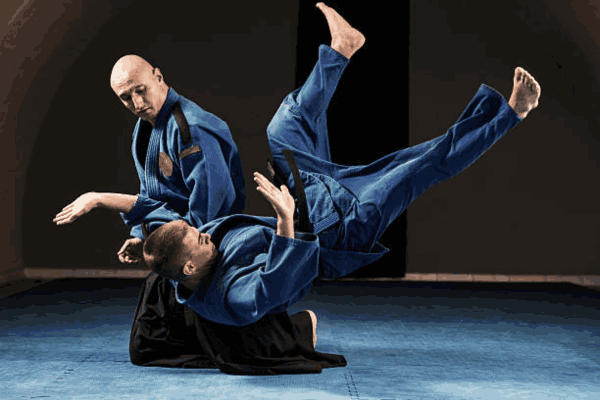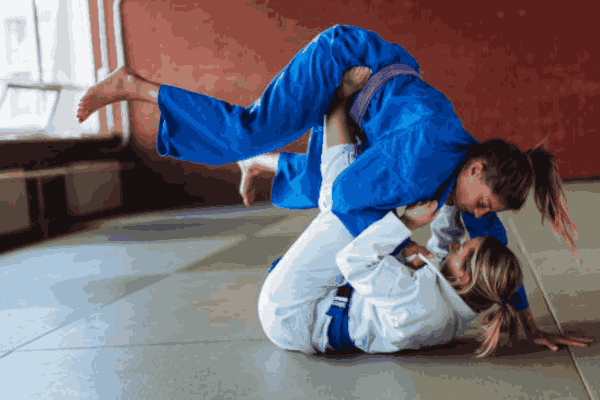
Learning martial arts is one of the popular ways of self-defense and that’s why martial arts are famous across the world. People get to experience new adventures and see the world with a unique perspective. Hapkido Vs Kung Fu are two popular yet disciplined martial arts.
Hapkido and Kung Fu, both martial arts are great techniques to learn but selecting one that suits your strategy is going to be a hard decision.
Furthermore, having the right understanding of both martial arts will help you achieve your goals in a better way. This detailed article will help you in deciding which martial arts to choose. Hapkido vs Kung Fu? Let’s find out.
Table of Contents
ToggleHapkido Vs Kung Fu
Hapkido
It is a Korean martial art that originated in the 20th century, combining elements of Taekwondo and traditional Korean martial arts. The name “Hapkido” translates to the “way of coordination and internal power.” It focuses on a harmonious blend of strikes, joint locks, throws, and pressure point manipulation.
Hapkido History
Hapkido was founded by Choi Yong-Sool, who was born in what is now North Korea in 1904. Upon returning to Korea after World War II, Choi Yong-Sool began developing Hapkido, integrating traditional Korean martial arts, his experiences in Japan, and his insights into an effective self-defense system.
The term “Hapkido” was coined by Choi Yong-Sool in the 1960s, combining “hap” (harmony), “ki” (energy), and “do” (way), encapsulating the art’s philosophy of redirecting and harmonizing with an opponent’s energy. Over the years, Hapkido has continued to evolve and expand.
Additionally, it has gained popularity both within Korea and internationally for its practical and versatile approach to self-defense. Hapkido has incorporated strikes, joint locks, throws, and pressure points.
Today, Hapkido is practiced and taught in numerous countries, with various organizations and styles contributing to its development and propagation.
Kung Fu
Kung Fu, also known as Gong Fu or Wushu, is a traditional Chinese martial art with a history spanning thousands of years. It encompasses a wide array of styles, each with its unique techniques, philosophy, and training methods.
Kung Fu History
Kung Fu, also known as Gong Fu or Wushu, has a rich and ancient history that dates back thousands of years in China. Furthermore, the exact origins of Kung Fu are shrouded in legend and folklore, but it is believed to have developed in the early days of Chinese civilization.
The early forms of Kung Fu were likely developed by ancient Chinese monks and Taoist hermits seeking ways to improve their health, physical strength, and self-defense capabilities. Over centuries, Kung Fu evolved and diversified, adapting to different regions, and philosophies.
Today, Kung Fu is not only a martial art but also a cultural treasure, practiced and admired worldwide for its beauty, complexity, and effectiveness.
Hapkido Technique List
Hapkido has a set of styles and effective techniques. Following is a hapkido technique list.
1. Joint Locks
2. Throws and Takedowns
3. Strikes (Punches, Kicks, Elbows, Knees)
4. Pressure Points
5. Wrist Locks
6. Arm Bars
7. Leg Sweeps
8. Finger Locks
9. Chokes and Strangles
10. Escapes from Holds
Kung Fu Technique List
Let’s check out a Kung Fu technique list.
1. Punches (Straight, Hook, Uppercut)
2. Kicks (Front Kick, Side Kick, Roundhouse Kick)
3. Strikes (Palm Strike, Hammerfist)
4. Blocks (High Block, Low Block, Inside Block)
5. Stances (Horse Stance, Bow Stance, Cat Stance)
6. Throws and Sweeps
7. Joint Locks and Breaks
8. Forms (Kata or Taolu)
9. Animal Styles (Tiger, Crane, Snake, Dragon, etc.)
10. Pressure Points and Vital Points
Famous Techniques of Hapkido
1. Joint Locks: Techniques that manipulate an opponent’s joints, applying pressure to control or disable them.
2. Throws and Takedowns: Methods to off-balance opponents and throw them to the ground.
3. Strikes: Utilization of punches, kicks, and strikes for offensive and defensive purposes.
Famous Techniques of Kung Fu
1. Wushu Forms: Highly choreographed routines showcasing a combination of acrobatics, kicks, and strikes.
2. Animal Styles: Many Kung Fu styles are inspired by animal movements, mimicking their agility and power.
3. Qi Gong: Breathing exercises and internal energy cultivation for health and martial performance.
Hapkido vs Kung Fu- A Side-by-Side Comparison

Differences
- Hapkido is Korean, while Kung Fu is Chinese, with distinct cultural roots and philosophies. Both martial arts have different origins, traditions, and values.
- Kung Fu is mainly focused on fluid movement and combination strikes. Also, it emphasizes techniques that are used to attack an animal. On the other hand, Hapkido arts are more about karate jumping kicks, throws, and joint locks.
Similarities
- Both arts focus on self-defense and practical applications of martial techniques. Hapkido vs Kung Fu, both are considered great martial arts for avoiding any unwanted fighting situation.
- Both Hapkido vs Kung Fu emphasize discipline, mental clarity, and philosophical aspects of martial arts practice.
- Furthermore, both martial arts help achieve mental peace, discipline, confidence, and health as well.
Which is Better? Hapkido vs Kung Fu?
Determining which martial art is “better,” whether Hapkido vs Kung Fu, is subjective and depends on personal preferences, goals, and individual circumstances.
The choice between Hapkido vs Kung Fu comes down to what aligns with an individual’s interests, fitness level, and desired outcomes in martial arts.
Some may prefer Hapkido for its focus on efficient self-defense, while others may appreciate the diverse techniques and cultural heritage of Kung Fu. Ultimately, the “better” martial art is the one that resonates with and meets the needs of the practitioner.
Conclusion
The determination of whether Hapkido vs Kung Fu is “better” depends on individual preferences, goals, and circumstances. Hapkido offers a more specific focus on practical self-defense techniques, joint locks, and throws, suitable for those seeking a direct approach to self-defense.
On the other hand, Kung Fu provides a broader range of styles and techniques, allowing practitioners to explore diverse aspects of martial arts and find the style that resonates with them.
Ultimately, the “better” martial art is the one that aligns with your interests, goals, and personal philosophy, so it’s essential to explore both Hapkido vs Kung Fu to determine which suits you best.
We hope this detailed and comparison article helped you learn something great and beneficial about hapkido vs Kung fu.
Frequently Asked Questions
1: Is hapkido effective?
Yes, hapkido is certainly an effective martial art to learn. It makes you able to defend yourself in hard situations. Additionally, it shows the confidence and self-esteem of the practitioner.
2: How are the Kung Fu belt rankings?
Kung Fu does not have a standardized belt ranking system like some other martial arts such as Karate or Taekwondo. In traditional Kung Fu, progression and ranking are often based on a sash system, patches, or other symbolic representations.
3: How does the Hapkido belt ranking work?
Hapkido typically employs a belt ranking system to denote a practitioner’s progression and level of expertise within the art. The system follows a progression from lower to higher ranks, often indicated by different colored belts.
- White Belt (Beginner): Starting level, symbolizing purity and the beginning of the martial arts journey.
- Yellow Belt: This represents the first stage of learning, where fundamental techniques and basic concepts are introduced.
- Green Belt: This signifies growth and development, where practitioners begin to grasp more advanced techniques and applications.
- Blue Belt: Symbolizes the sky, indicating further progress and a deeper understanding of Hapkido principles.
- Brown Belt (Various Levels): Indicates a higher level of proficiency, with multiple degrees of brown belts often signifying advanced knowledge and skills.
- Hapkido Black Belt (Dan Levels): Hapkido black belt, often divided into multiple degrees or dans, demonstrates a mastery of Hapkido. The progression continues with higher dan degrees, signifying increasing expertise.
4: Is Kung Fu for adults?
Yes, people of any age can learn kung fu martial arts as it allows them to be a better version of themselves. From kids of 6-7 years to adults of 25 years old. It’s never too late to start learning a new martial technique.